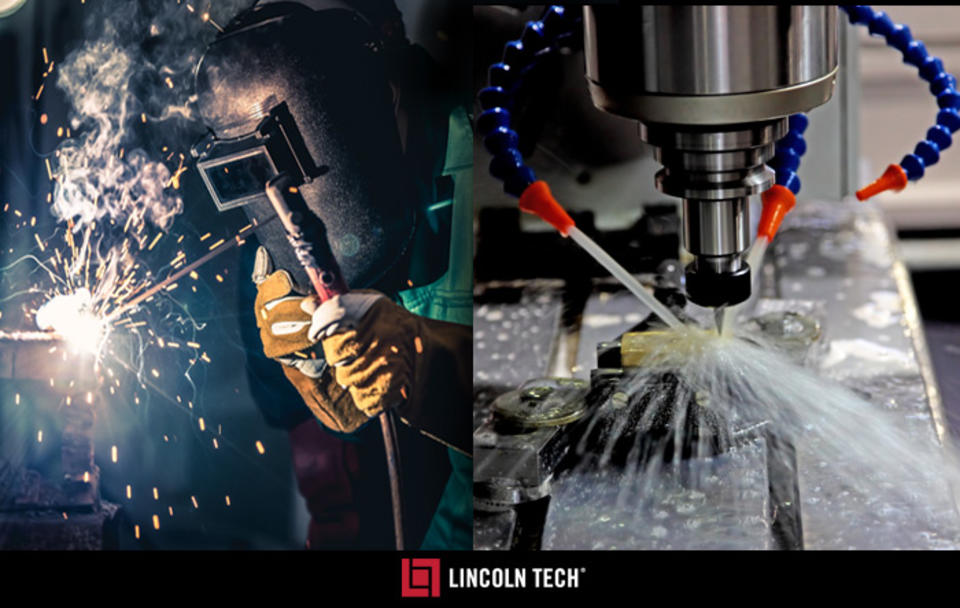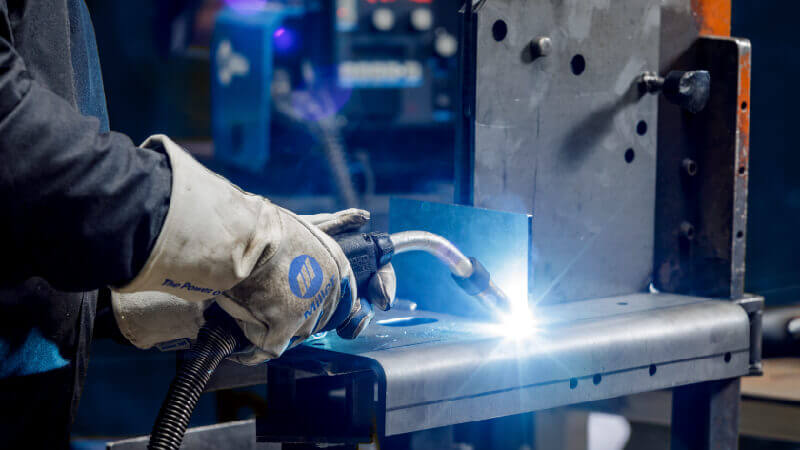Usual Welding Repair Issues and How to Address Them Efficiently
Welding repairs usually run into a series of issues that can jeopardize the stability of the end product. Common troubles include poor penetration, porosity, and misalignment, to name a few. Each flaw provides special obstacles that need details approaches for resolution. Recognizing these issues is essential for welders aiming to improve their end results and skills. This conversation will explore these common welding fixing issues and efficient approaches to resolve them.
Poor Penetration
Poor infiltration takes place when the weld steel falls short to completely fuse with the base product, causing weak joints and prospective architectural failures. This concern commonly originates from insufficient warmth input, wrong electrode angle, or improper welding rate. Welders may encounter inadequate infiltration as a result of a mistake of the essential parameters for a specific material thickness or kind. Furthermore, contamination on the base product's surface can prevent reliable bonding, aggravating the trouble. To deal with insufficient infiltration, welders must assure suitable settings on their tools and maintain a tidy job surface area. Normal examination of welds is suggested to recognize any type of deficiencies early, permitting for prompt corrections and the prevention of endangered architectural honesty in welded assemblies.
Porosity
Porosity is an usual issue in bonded joints that materializes as small gas bubbles entraped within the weld metal. This issue can jeopardize the honesty of the weld, bring about decreased stamina and possible failing under tension. Fabrication. Porosity generally occurs from contamination, wetness, or improper welding strategies, which enable gases to run away right into the liquified weld swimming pool. To deal with porosity, welders must assure proper surface prep work, keep a tidy working atmosphere, and use appropriate welding criteria. In addition, selecting the ideal filler material and securing gas can alleviate gas entrapment. Routine evaluation and screening of welds can aid identify porosity early, assuring prompt rehabilitative activities are taken, thereby preserving the quality and reliability of the welded structure
Imbalance
Misalignment in welding can arise from various aspects, consisting of incorrect setup and thermal expansion. Recognizing the origin causes is essential for efficient resolution. Several correction methods are available to realign parts and assure architectural honesty.
Reasons for Misalignment
Welding misalignment commonly comes from a selection of underlying issues that can endanger architectural integrity. One primary cause is inappropriate fit-up of components before welding, which can cause gaps and irregular surface areas. Variants in thermal growth throughout the welding process can likewise result in distortion, specifically if the products being signed up with have different coefficients of growth. Furthermore, poor securing and fixturing may fall short to hold parts securely in place, resulting in activity during welding. Inadequately conserved devices, including welding machines and tools, might present variances in the weld grain, further adding to misalignment. Ultimately, driver mistake, originating from insufficient training or experience, can also play a significant role in creating misaligned welds.
Adjustment Techniques Available
Addressing misalignment effectively calls for a combination of corrective methods tailored to the details problems at hand. One common method is making use of jigs or fixtures to hold components in the correct placement during welding, ensuring consistent alignment. Furthermore, pre-heating the materials can help in reducing distortion and enhance fit-up. For substantial misalignment, mechanical adjustment methods, such as using hydraulic jacks or clamps, can be used to deal with the position prior to welding. Post-weld heat therapy might additionally be necessary to alleviate stress and anxieties triggered by misalignment. Mindful inspection and modification during the setup phase can stop misalignment concerns from ending up being significant problems, promoting a smoother welding procedure and boosting general architectural stability.
Distortion
Distortion is an usual challenge in welding that can develop from various variables, including unequal cooling and heating. Understanding the sources of distortion is vital for executing effective prevention techniques. Resolving this issue not just improves structural integrity however likewise boosts the overall quality of the weld.
Reasons for Distortion
When subjected to the intense heat of welding, materials frequently undergo changes that can result in distortion. This phenomenon primarily emerges from thermal expansion and contraction throughout the welding process. As the weld area warms up, the product broadens; upon air conditioning, it contracts, which can produce inner stress and anxieties. On top of that, uneven heating across a work surface can exacerbate these tensions, resulting in bending or bending. The sort of product additionally plays a significant role; metals with differing thermal conductivity and coefficients of expansion may respond in different ways, causing unpredictable distortions. Bad joint style and poor fixturing can contribute to misalignment during welding, raising the likelihood of distortion. Recognizing these helpful site causes is essential for reliable welding fixing and avoidance methods.
Prevention Techniques
Reliable avoidance strategies for distortion throughout welding concentrate on regulating warmth input and guaranteeing correct joint style. Maintaining a regular warm input aids to minimize thermal development and tightening, which can lead to distortion. Using methods such as preheating the workpiece can additionally reduce the temperature gradient, promoting consistent home heating. In addition, choosing suitable joint designs, such as T-joints or lap joints, can boost security and lower stress and anxiety concentrations. Implementing proper fixturing to protect the workpieces in area additionally help in maintaining alignment throughout the welding procedure. Finally, staggered welding sequences can distribute warmth much more equally, avoiding local distortion. By using these techniques, welders can considerably lower the likelihood of distortion and enhance the total high quality of their welds.
Fracturing
Splitting is a typical problem come across in welding repairs, frequently resulting from numerous elements such as incorrect cooling prices, product choice, or poor joint prep work. The incident of fractures can significantly endanger the stability of the weld, resulting in possible failings during procedure. To resolve this concern, welders must initially assess the root triggers, making sure that products are suitable and suitably selected for the certain application. In addition, controlling the cooling price throughout the welding procedure is essential; quick cooling can generate anxiety and lead to cracking. Proper joint design and prep work additionally contribute to minimizing the threat. Applying these methods can improve weld top quality and sturdiness, ultimately decreasing the possibility of cracking in ended up weldments.

Insufficient Combination
A significant concern in welding fixings is insufficient combination, which occurs when the weld steel does not appropriately bond with the base material or previous weld passes - Belgrade. This issue can cause weaknesses in the joint, potentially endangering the honesty of the welded framework. Factors contributing to insufficient fusion include inadequate heat input, improper welding method, and contamination of the surfaces being joined. To resolve this problem properly, welders ought to guarantee appropriate pre-weld cleansing and surface prep work, in addition to readjust their welding parameters to accomplish ample penetration and blend. Normal evaluation throughout the welding procedure can also help determine insufficient combination early, enabling timely restorative actions to boost the overall high quality of the weld
Overheating
While welding repair work can boost structural stability, overheating provides a substantial obstacle that can lead to material degradation. Too much warm during welding can modify the mechanical homes of metals, causing lowered toughness, raised brittleness, and warping. This sensation is especially vital in high-stress applications where architectural reliability is paramount. Identifying getting too hot can entail aesthetic evaluations for staining or distortion, as well as keeping track of temperature level during the welding process. browse around this site To mitigate the risks connected with overheating, welders must utilize ideal techniques, such as regulating warmth input, changing traveling speed, and using suitable filler materials. Additionally, implementing pre- and post-weld warm therapies can assist restore material properties and improve the total top quality of the fixing, ensuring lasting efficiency and safety.
Frequently Asked Questions
What Are the Typical Indicators of a Welding Problem?

Exactly How Can I Check My Welds for Top quality?
To examine welds for quality, one can utilize visual evaluations, ultrasonic testing, and radiographic methods. Each technique assures structural stability, identifies defects, and confirms adherence to defined requirements, eventually enhancing the reliability of the welded joints.
What Safety Safety Measures Should I Take While Welding?
When welding, one need to prioritize security by using appropriate individual protective devices, making sure proper air flow, securing flammable products away, keeping a clean office, and recognizing surroundings to stop accidents and injuries.
Can I Fix a Weld Without Remodeling the Entire Joint?
Fixing a weld without redesigning the whole joint is possible, relying on the damages (Montana Mobile Welding and Repair). Methods such as grinding, adding filler product, or using a welding procedure can effectively address specific problems while maintaining the surrounding structure
What Equipment Are Important for Reliable Welding Services?
Vital tools for reliable welding repair services consist of a welding machine, cable brush, grinder, protective equipment, clamps, and filler products. Each tool plays an essential role in making sure top quality and safety and security during the repair work process. Porosity usually arises from contamination, dampness, or inappropriate welding strategies, which enable gases to escape into the molten weld pool. Poorly maintained equipment, including welding devices and devices, may introduce variances in the weld grain, additional adding to imbalance. When subjected to the intense warmth of welding, materials frequently undertake modifications that can lead to distortion. Fracturing is an usual problem run into in welding repair work, commonly resulting from various elements such as incorrect air conditioning rates, product selection, or inadequate joint preparation. A considerable issue in welding fixings is incomplete fusion, which takes place when the weld metal does not sufficiently bond with the base material or previous weld passes.